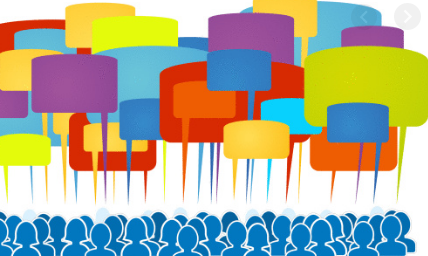Customer experience design, CX, is something of the new black in digital right now. CX is the tech industry’s push to humanize UX – UX by definition was product-focused – and that puts the product at the center.

CX starts with the customer and the experience they desire and then works back to the technology from there. And from a business perspective, customers eat users for breakfast – as Tom Peters famously noted every business has just two functions – to win and keep customers. Customers pay, and users – well sometimes they don’t.
What do customers want? Lots of things. But at the top of the list is for it to be easy to do business with you.
That’s what CX is about.
The truth is that ideas need ecosystems to support them and that doesn’t happen overnight. To make an idea viable in the real world it needs to continually connect outward, gaining adherents and widening its original context.
That takes more than an initial epiphany. It takes the will to make the idea subservient to its purpose. What we have to learn to accept is that what makes an idea powerful is its ability to solve problems.
The ideas embedded in the American Constitution were not new at the time of the country’s founding but gained power by their application in the real world. In much the same way, we revere Einstein’s relativity, Pauling’s vaccine, and Jobs iPhone because of their impact on the world.
As G.H. Hardy once put it, “For any serious purpose, intelligence is a very minor gift.” The same can be said about ideas. They do not and cannot stand alone, but need the actions of people to bring them to life.
Here are 23 ideas to expand your customer experience design.
Speed
Most customers don’t want to take a ton of time deciding what to buy. They check with their friends and followers on social media and maybe do research on a few review websites to make their decision. And once their decision is made, they want to be able to pull the trigger … quickly. Don’t introduce any impediments to your buying experience!
Knowledge
If someone’s been a customer of yours for years, you should know that. You should know what she’s bought from you and remember it when she calls in with a question or for service.
Her loyalty to you is worth at least some acknowledgment. Do your customers matter to you? If so, know them and show them.
Ease of use
People don’t like to follow directions. If you want customers to do something, make the process so easy, so obvious, so intuitively clear that they will be able to follow the path you’ve laid out as easily as water finds the valley floor. Don’t expect consumers to think!
Availability
Customers will contact you — whether via text, phone, mail, email, tweet, Facebook message, or in-person — when it’s convenient for them, not for you. They don’t care about your operating hours.
They expect you to be always on and listening. Don’t expect to limit your hours of availability from 9 a.m. to 4 p.m. when your customers work from 8 a.m. to 5 p.m.!
Authenticity
Customers want no games, no gimmicks, and no fine print. They want straight talk — no bait and switch. That means all your touchpoints (website, stores, and so on) need to be using the same real-time information.
Oh — and don’t configure your default settings to cheat the consumer. And don’t lie to them, because they’ll find out.
Care
If customers merely want a transaction, they’ll buy online. For anything else, they probably prefer to be treated like human beings. Like you, consumers have feelings, emotions, and dreams. Don’t turn them into a persona or a segment. Don’t target or quantify them.
Keeping it simple stupid (KISS)
The agent kept the email as simple as possible. Using simple language and grammar. There was adequate spacing/paragraphing. This email can be understood by virtually anyone.
Reception
Shhhh. Stop talking. Be quiet and listen. Then do something with what your customers tell you. If you must ask questions, listen to their response. And don’t ask too many questions all at once. Customers don’t like being interrogated.
Finally, be clear about what you’re going to do with the information you collect. Your customers’ default position is that you’ll misuse their information. Convince them otherwise.
One-stop shopping
Don’t shuffle customers around from department to department. They don’t care about your organizational structure, your politics, or who has the real clout in the company.
They care about getting their questions answered and their concerns addressed — preferably by the first person they talk to, not the fifth.
Problem-solving
If something does go wrong, customers need it fixed, fixed properly, and fixed now.
Pulling away from the conventional
When I sent an inquiry through to Amazon, I received an auto-response that stated: “We answer most emails in less than 12 hours.” This is a slight variation from the conventional auto-response from most companies.
Most companies will state that a reply will be given within 24 or 48 hours. Amazon is among the very few companies that use the unique time-frame of 12 hours.
Keep the promise
The auto-response stated I will receive an email in less than 12 hours- Amazon fulfilled this promise. The auto-response came through at 22.38 pm and the actual customer support email was delivered by 7:09 am.
It took approximately 8 hours and 31 minutes to receive a support reply. This is simply a promise kept- a reply that came through in less than 12 hours.
Possibility and positivity
This might sound silly to some but customers that send through an inquiry are sometimes triggered by worry. We worry that our order may have been delivered to the wrong address or that our bill may have been wrongly calculated.
Worry and anxiety in some of these cases propel customers to send through an inquiry. The second paragraph from the agent was full of possibilities. It also had a positive tone that will calm any customer’s nerves.
Thanking the customer for the inquiry
As companies try to dissuade customer inquiries via email, they are putting more effort into expanding the frequently asked questions section. Not all companies appreciate or thank the customer for reaching out.

After addressing me, the agent thanked me for contacting their seller support department. Thanking the customer will always work magic in the CX journey.
Recap the customer’s inquiry
Nothing puts off a customer like a blanket email response void of personalization. Amazon showed they read my email inquiry by recapping my inquiry in the first paragraph of the email.
It was not copied and pasted but being rephrased and prefixed with “I understand….” It showed the agent read my question and is reaffirming his understanding of it.
.
Customer journey
Marketers need to predict and monitor the customer journey, not the sales cycle. When marketing and sales deliver the right information at the right time, they are able to build relationships and let the customer choose the direction.
This includes inbound marketing tactics like offering premium content the customer downloads after submitting profile information, which helps to identify qualified leads and provide more relevant information in subsequent interactions.
Customer conversations
Conversations need to take place in real-time. Thanks to real-time decision technology, organizations have the to ability deliver a personalized experience to each customer or prospect right at that moment of interaction — be it lunch on a weekday or one in the morning.

Give them what they need, when they need it, and structure your digital ecosystem so that consumers can discover more through serendipity, not by you forcing it on them.
Relevance and personalization
Relevance and personalization are key. Customers get vocal and often discredit the company and its communication when they encounter marketing and advertising that doesn’t speak to their needs and interests.
In one recent example — and there are countless others — a photo service sent out emails congratulating customers on having a baby. The problem was the email went out to the company’s entire list, which included people who had not welcomed a new bundle of joy and were offended.
The secret to delivering a tailored experience is collecting data, using it to show your audience you understand them, looking at analytics to find opportunities for improvement, and optimizing continuously.
Solving problem
Marketing content has to be about solving problems, not selling products. Today’s consumers are sophisticated and wary of blatant marketing efforts.
Every communication needs to address critical challenges and pain points and answer “what’s in it for me” for every customer. You’ll know your messaging is resonating if people are sharing your content.
Brand experience
Brand interactions need to be consistent across all channels. Whenever and wherever someone interacts with your brand, the experience needs to build upon everything that came before and flow seamlessly into what they do next.

Again, this is a challenge aided by technology. If a customer calls a contact center, wouldn’t it be good to know in real-time that the customer had recently opened an email about a particular product, and read six web pages about that product?
Marketers and CRM specialists need to maintain an interaction data store so that the history and meaning of previous interactions can be factored into the personalized next-best-action decision engine. Attribute data about a person and people like that person is no longer enough to make optimal real-time decisions in this omnichannel world.
Being with your customers
Omni-channel capabilities will be critical. Today’s marketing is all about meeting your customers where they are, regardless of channel or platform. If your audience spends time on Twitter or Pinterest, so should you.
If they’re mostly on tablets and phones, consider a mobile app. But all of this technology needs to work together to avoid mixed or misdirected messages, like the example given in rule No. 3.
Always do what you say
Don’t make a promise you can’t keep. You can’t just tell people they’re important to you; you need to show it in everything you do and say. That includes addressing issues and complaints promptly and professionally, as well as asking permission and earning trust at every interaction.
It’s important to note that changing the minds of your fellow marketing team members might not be easy at first, but the first step is to commit to changing the focus from campaign-oriented marketing to real-time marketing.
You need to devise a plan and shift and gather the right team to develop a holistic, long-term strategy — then get ready to put those plans into motion. The organizations that embrace this new reality will be the ones that rise to the top.
The bottom line
These are a few insights as to why the best companies excel in customer experience. The customer experience is the next competitive battleground. I believe companies will continue to aspire to climb up the CX ladder. Some get the basics and priorities wrong.
I do think one of the basics was poignantly summed up as:
You’re customers don’t care how much you know until they know how much you care.
You’ve got to really care about your customers in a bid to get up the ratings.
